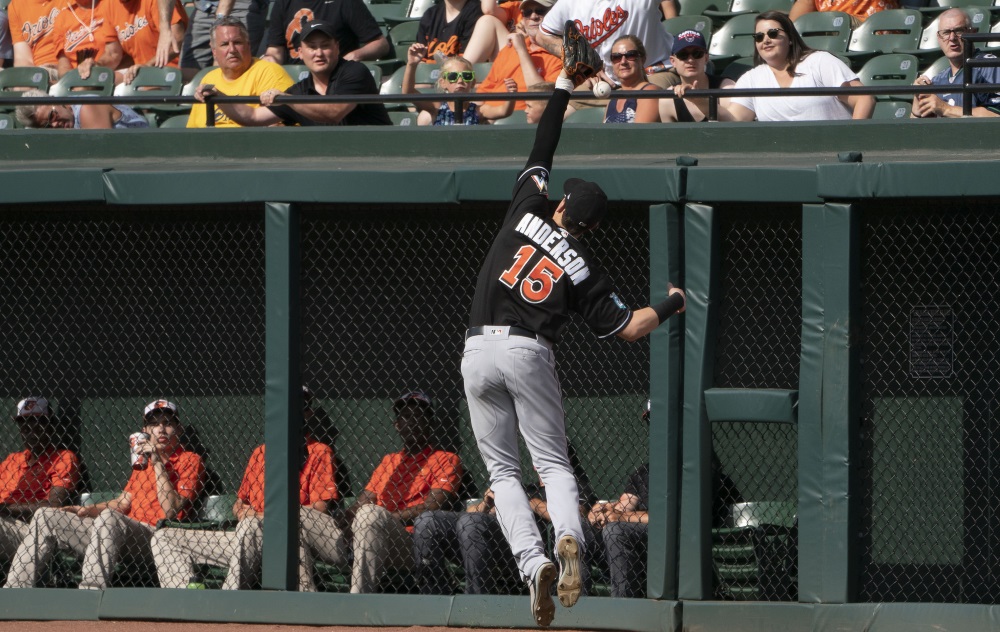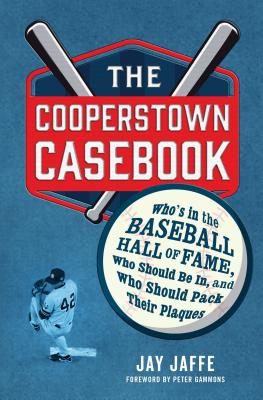In one sense, Jon Gray’s 2018 season has been pretty successful. He’s struck out 29% of the batters he’s faced this year, for example, which ranks 12th among 90 qualified starters. His walk rate, at 7%, sits in the top third for starters. His home-run rate of 1.1 per nine innings is right in the middle of the pack among that sample, too, as are his 92 innings.
That’s he’s done of his work at elevation in Colorado makes those numbers even more impressive. His 3.07 FIP has produced a 2.5 WAR, one of the top 15 figures in baseball. Unfortunately, the Rockies haven’t received the benefit of that good pitching. In fact, Gray’s 5.77 ERA ranks 88th out 90 starters. The massive difference between his ERA and FIP would represent the largest such disparity in baseball history, and it was of sufficient concern to the Rockies to send Gray to Triple-A.
Not too long ago, Jay Jaffe wrote a piece on Jon Lester, whose season was also busting historical norms. Lester’s ERA was significantly lower than his FIP. So far this season, Gray is Lester’s opposite. The graph below shows every pitcher’s FIP and ERA this season.

You can see Jon Lester over there on the left on his own. If you go to the right, you can see Jon Gray with nobody even close to him. It should be evident that, in the middle, most players are reasonably close when it comes to ERA and FIP. The average differential per player 0.53. Of the 88 ERA and FIP pairs in this sample, 77 are within one run. So far this season, Gray’s 2.69 ERA-FIP is roughly double the player closest to him, as the table below shows.
Biggest ERA-FIP Gaps, 2018
Qualified starting pitchers.
That isn’t just remarkable for this season. Since 1901, here are the biggest differences among qualified pitchers.
Largest ERA-FIP Since 1901
Qualified starting pitchers.
There are a few Hall of Famers on that list in Blyleven and Wynn, but nobody comes close to what Gray has done thus far. Just to get a few more familiar names, here’s the same list since 1995.
Largest ERA-FIP Since 1995
Qualified starting pitchers.
There are some good pitchers on this list, too, including Zack Greinke. The odds are against Gray maintaining such a high difference. With half a season to go, Gray’s ERA is likely to be considerably closer to his FIP moving forward. If, the rest of the way, Gray’s FIP is one run lower than his ERA like it was in 2016, his ERA will end up right around Chris Bosio’s 1.86 number from 1988. If Gray’s ERA is half a run higher than his FIP like it was last year, he’ll end up with something close to Jaime Navarro’s 1.59 from 1997 and not even crack the top-15 all-time.
As we are getting close to the All-Star Break, it might be useful to take a look at the biggest half-season differences from our splits leaderboards, which go back to 2002. Here are the biggest first-half differences for pitchers with at least 70 first-half innings.
Largest ERA-FIP by Half Since 2002
Min. 70 IP
That was quite a performance from Glendon Rusch. He would actually go on to have a couple productive seasons as a Cubs swingman, but 2003 might have soured the Brewers on his future. Scanning the list for similar performances to Gray, another Brewer, Zach Greinke, sticks out with a near-identical FIP to Gray this season. As the average indicates, we have roughly average to maybe below-average pitchers by FIP accompanied by horrendous ERAs. The next table shows how those players performed in the second half.
Second-Half Performance for Largest ERA-FIP
| Name |
Team |
Season |
1st Half FIP |
1st Half ERA-FIP |
2nd Half IP |
2nd Half ERA |
2nd Half FIP |
2nd Half ERA-FIP |
| Glendon Rusch |
MIL |
2003 |
4.38 |
3.71 |
18.0 |
4.00 |
2.14 |
1.86 |
| Tim Lincecum |
SFG |
2012 |
4.01 |
2.42 |
89.1 |
3.83 |
4.36 |
-0.53 |
| Ubaldo Jimenez |
BAL |
2016 |
4.63 |
2.40 |
52.2 |
2.39 |
3.60 |
-1.21 |
| Zack Greinke |
MIL |
2011 |
3.05 |
2.40 |
97.1 |
2.59 |
2.92 |
-0.33 |
| Colby Lewis |
TEX |
2014 |
4.17 |
2.37 |
86.1 |
3.86 |
4.75 |
-0.89 |
| Ricky Nolasco |
FLA |
2009 |
3.56 |
2.20 |
94.1 |
4.39 |
3.15 |
1.24 |
| Jake Arrieta |
BAL |
2012 |
4.04 |
2.09 |
0.0 |
— |
— |
0.00 |
| Edwin Jackson |
TBD |
2007 |
5.19 |
2.07 |
86.1 |
4.48 |
4.62 |
-0.14 |
| John Lackey |
BOS |
2011 |
4.84 |
2.00 |
81.0 |
6.00 |
4.58 |
1.42 |
| Manny Parra |
MIL |
2009 |
4.80 |
1.98 |
68.1 |
5.93 |
4.96 |
0.97 |
| Ryan Dempster |
CIN |
2003 |
4.78 |
1.97 |
16.2 |
6.48 |
6.63 |
-0.15 |
| Sidney Ponson |
BAL |
2004 |
4.35 |
1.94 |
102.2 |
4.21 |
4.54 |
-0.33 |
| Edinson Volquez |
SDP |
2013 |
3.85 |
1.89 |
59.2 |
5.73 |
4.98 |
0.75 |
| AVERAGE |
— |
— |
4.28 |
2.26 |
66.0 |
4.49 |
4.27 |
0.20 |
Min. 70 IP.
As we might expect, the players’ first-half FIPs line up pretty well with their second-half FIPs. What’s interesting is that the second-half ERAs also line up pretty well with the FIPs from both the first and second halves. While this is what we would expect to see, it’s nice to have it show up so neatly.
One problem the above doesn’t solve is why Gray’s FIP, specfically, is so much lower than his ERA. A portion of the responsibility goes to his home park. Pitchers routinely post higher ERAs than FIPs in Coors Field because BABIP is a lot higher in Coors Field. Balls in play are not incorporated into FIP, so larger swings, like the one we see at Coors Field, are going to drive up ERA a bit. That only explains a very small portion of Gray’s differential, though. For the rest, please see the graph below depicting BABIP and left-on-base percentages for all qualified starting pitchers.

Previous research indicates that a vast majority of the difference between FIP and ERA is due to two factors, the two stats seen in the table above: BABIP and LOB%. Gray is the worst in both, about 50 points clear in BABIP and with few peers in LOB% this season.
A really poor BABIP might be an indicator that Gray is no longer an MLB-caliber pitcher. The rest of his stats say otherwise, however. Per Baseball Savant, his expected BABIP is about 50 points lower than his actual figure. As league-wide expected BABIP is about 20 points higher than actual BABIP, even once you factor in Coors Field, Gray’s BABIP is about 50 points too high based on the quality of contact, leaving the rest to luck and defense.
As for left-on-base percentage, if it were really high, we might think that perhaps Gray has trouble pitching with runners on base and that Gray’s 1.91 FIP with bases empty compared to 4.67 with runners on — and his .274 xwOBA with bases empty compared to .334 with runners on — speaks to the same issue. However, the latter number is roughly average for the league regarding xwOBA and pretty close to average for FIP once Coors Field is factored in. Jeff Zimmerman theorized that the issue might be pitching meatballs behind in the count, but even Gray’s numbers behind in the count are similar to an average pitcher in those situations. His velocity has been down in his last few starts. Ben Lindbergh noted the absence of competitive pitches from Gray this season. However, none of those theories explains a league-worst left-on-base rate or the massively high BABIP. The Rockies would have to keep Gray in Triple-A the rest of the season to game his service time, so that is an unlikely motivation, although if he hits the disabled list in the minors he would not accrue MLB service time like he would if he were DL’d now and something more serious was discovered.
Jon Gray is performing historically so far, but not in the way he would like. Now he’s pitching in a city he’d probably prefer not to. Based on the past history of others, as well as himself, there seems to be a pretty good chance — absent injury — that his ERA is going to be headed downward soon even if the big-league Rockies won’t be seeing the benefit of that downturn at the moment.





 As a prospect-focused senior baseball writer for ESPN Insider, a former member of the Toronto Blue Jays’ front office, and an alumnus of Baseball Prospectus, Keith is uniquely positioned to explain the evolution of talent evaluation within baseball and to examine the trends that are shaping the field in the 21st century. Whether you’re a long-time stathead or a newcomer to this little corner of the game, you’ll enjoy his book (full title Smart Baseball: The Story Behind the Old Stats That Are Ruining the Game, the New Ones That Are Running It, and the Right Way to Think About Baseball) and you can order a signed, personalized copy ahead of time
As a prospect-focused senior baseball writer for ESPN Insider, a former member of the Toronto Blue Jays’ front office, and an alumnus of Baseball Prospectus, Keith is uniquely positioned to explain the evolution of talent evaluation within baseball and to examine the trends that are shaping the field in the 21st century. Whether you’re a long-time stathead or a newcomer to this little corner of the game, you’ll enjoy his book (full title Smart Baseball: The Story Behind the Old Stats That Are Ruining the Game, the New Ones That Are Running It, and the Right Way to Think About Baseball) and you can order a signed, personalized copy ahead of time  The Cooperstown Casebook is the culmination of a decade and a half of my research and writing about the National Baseball Hall of Fame and Museum — the forces that shaped the Hall and its honorees, and the battles to recognize and honor the game’s greats and its history, with an emphasis on how advanced statistics have changed our understanding of what makes a Hall of Famer. You can read plenty more about the book
The Cooperstown Casebook is the culmination of a decade and a half of my research and writing about the National Baseball Hall of Fame and Museum — the forces that shaped the Hall and its honorees, and the battles to recognize and honor the game’s greats and its history, with an emphasis on how advanced statistics have changed our understanding of what makes a Hall of Famer. You can read plenty more about the book